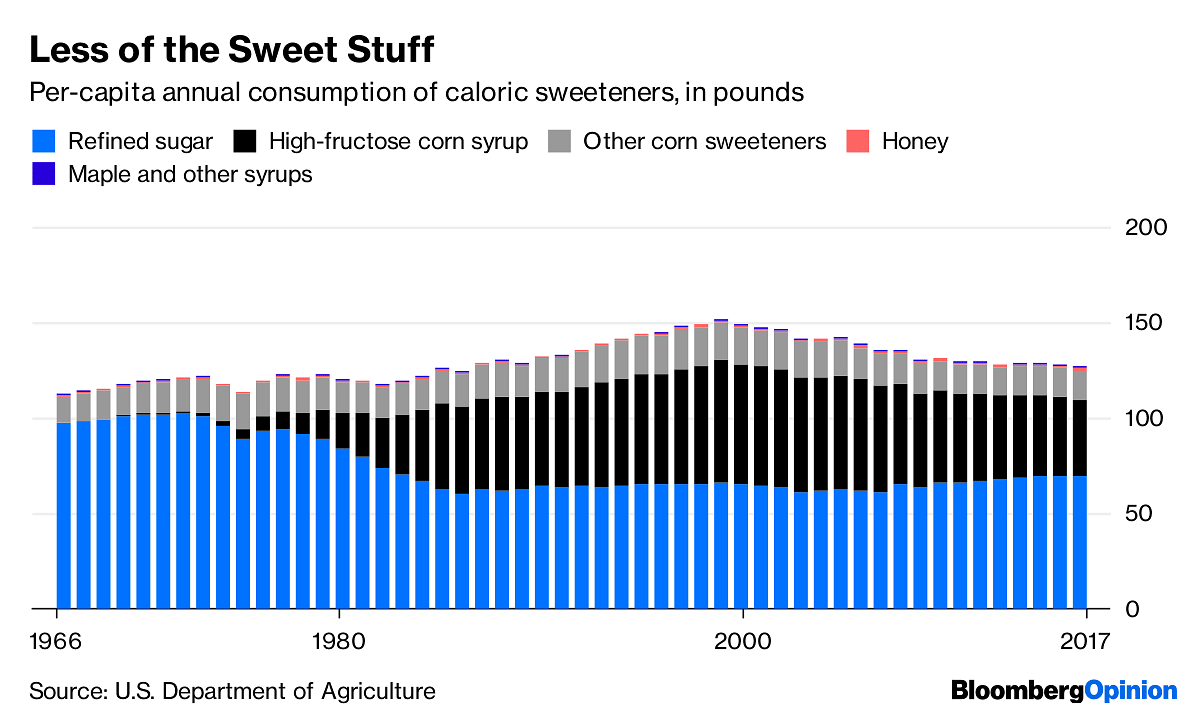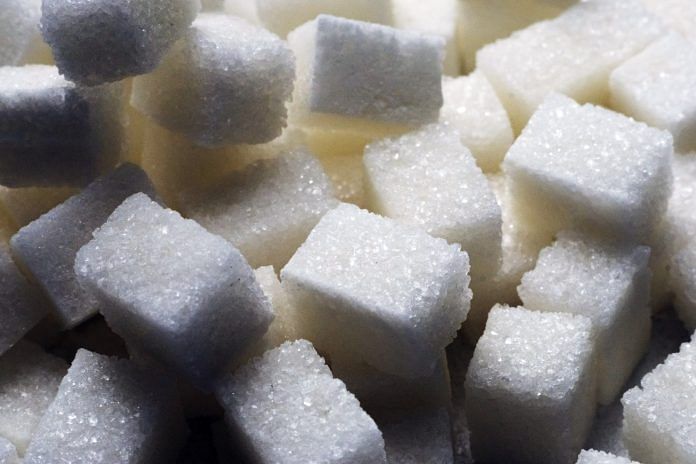Few cities in US have penalised sugar consumption with soft-drink taxes, while some food manufacturers have reformulated products to use less of the stuff.
Per-capita consumption of sugar and other caloric sweeteners was down in the U.S. in 2017 for the third straight year — and 13th out of the past 18. And this time, consumption of refined sugar, which had been rising over the past decade as consumers (and soft-drink makers) turned away from high-fructose corn sweeteners, fell as well.
The 2017 numbers, which the U.S. Department of Agriculture released a few weeks ago but haven’t gotten much attention yet, aren’t really big news in the sense that they overturn an established narrative. There had already been talk of a global “sugar glut” brought on by booming production in Asia, ebbing demand in developed countries, and slowing demand growth in emerging markets. It’s also clear from the above chart that the decline in overall sweetener use in the U.S. began a while ago (I’ve written about it before) and has actually slowed somewhat in recent years.
Still, it is continuing to decline, which strikes me as a great victory in this age of distrust of scientific knowledge and widespread sentiment that everything is getting worse. Added sugar, broadly defined (that is, including corn syrup and the lot), is probably bad for you in anything but quite small doses. Yes, there have been other foods described by experts as bad over the past 50 years (fat and eggs spring to mind) that have turned out not to be, but — while there do seem to be concerns that treating sugar in isolation is misleading — the evidence linking high sugar consumption to obesity and a range of other maladies is pretty overwhelming. And whaddya know: People have been responding by … eating less sugar.
Obviously it’s not all the result of individuals reading or hearing about the health risks of sugar and choosing to forego it. A few cities have penalized sugar consumption with soft-drink taxes, while some food manufacturers have reformulated products to use less of the stuff. We may see many more such moves before 2020, when new Food and Drug Administration rules — delayed by the Donald Trump administration but apparently given the go-ahead this year — require food labels to include information on added sugars.
Sugar consumption also varies by region and by socioeconomic group. The consumption of sugar-sweetened beverages is highest in the South, reports the Centers for Disease Control and Prevention, and is also higher among low-income Americans. On the other hand, a 2016 study found that the decline in sugar consumption since the early 2000s has crossed socioeconomic lines.
U.S. sugar consumption does still have an awfully long way to fall. As of 2013, according to the most recent data from the Food and Agriculture Organization of the United Nations, the U.S. led the world in per-capita sugar consumption (Malta and Switzerland came in second and third). The American Heart Association’s current recommended daily added sugar limit is 36 grams for men and 25 for women. The per-capita 2017 numbers reported by the USDA come out to almost 159 grams a day.
The agency does not actually monitor how much sugar we put in our bodies; it measures “estimated deliveries for domestic food and beverage use” and divides it by the population. But surveys in which people are asked about their sugar consumption show similar trends. Those trends are headed in the right direction, and let us for the moment just be thankful for that.-Bloomberg



